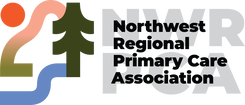 By Chris Connor I remember my first exposure to coding many years ago. I could get by with some minimal knowledge as an implementation/salesperson for an EHR vendor, but I immediately grew such an appreciation for the complexity of the craft of coding. Now, with all of the regulatory requirements, ICD-10 which expanded the diagnosis base 10 fold or more, bundling, unbundling, I appreciate even more those that chose coding as a profession. One area I wanted to highlight though, is the value of a properly coded visit, even if it’s tied to non-revenue visits. Now one thing I know, is when you’ve seen one FQHC, you’ve seen one FQHC. And it’s no different when it comes to the volume these visits make up of your total visit volume. The percentage of zero-dollar visits at your center will vary based on several factors, including the population served, the location of the health center, the mix of services provided, and the payer mix. OK, no need to raise your hands here, but how many of you code each and every visit with a certified coder? It becomes rather daunting at times, and one of the first areas I’ve seen suffer is payng a certified coder to code visits that generate no revenue, i.e., no reimbursement for that visit. I want to offer a few things my team of certified coders see and advise as part of our Revenue Cycle Services team, and also offer some real-world reasons to place an emphasis on getting each of those visits coded. First, why? Why code all those visits and pay money with no reimbursement expectations. Grant and Funding Requirements are critical for FQHCs, as grants serve as a major funding source. The successful acquisition of grants relies heavily on the provision of accurate data. Ensuring accurate coding for all visits is paramount, as it enables the center to demonstrate the full scope of its services effectively. This demonstration is essential for both securing and maintaining funding, making accurate documentation a foundational aspect of financial sustainability. Accuracy in Documentation extends beyond financial considerations. Coding zero-dollar visits is imperative for maintaining a comprehensive and reliable patient record, irrespective of the financial impact. This meticulous documentation is crucial for delivering high-quality and continuous care, contributing significantly to the overall patient experience. Compliance with regulations is another key aspect tied to accurately coding zero-dollar visits. This not only ensures adherence to regulatory requirements but also maximizes the potential for appropriate reimbursement through alternative methods, such as value-based care or quality incentives. Compliance becomes a strategic approach to navigating the intricacies of healthcare funding. Quality Reporting is a pivotal function supported by complete and accurate coding. Many health centers participate in quality improvement programs and reporting initiatives. If you’re not one of those centers, it’s likely you’re evaluating one right now. Proper coding for zero-dollar visits plays a crucial role in meaningful and accurate quality reporting, influencing the overall perception of the center's performance in delivering healthcare services. Data Analysis and Population Health Management benefit significantly from proper coding practices. Beyond population health, accurate coding aids in identifying trends and facilitates informed decisions about resource allocation, preventive care, and community health initiatives. This strategic use of coded data enhances the overall efficiency and effectiveness of health center operations. UDS Reporting, a cornerstone for funding from HRSA, relies on accurate coding. Failure to code visits properly results in inaccurate reporting of UDS data, potentially jeopardizing funding for the health center and others nationwide. The importance of providing HRSA with an accurate portrayal of services cannot be overstated. Continuity of Care is a fundamental consideration in healthcare, and complete coding supports it by offering a comprehensive overview of a patient's medical history and interactions with the health center. For FQHCs who deal with very complex patient healthcare needs, this comprehensive overview is especially crucial for providing consistent and coordinated care. Risk Adjustment, particularly in value-based care models, underscores the importance of accurate coding. It ensures that the health center receives appropriate compensation for the level of care required by its patient population, even if some visits result in no direct revenue. This strategic coding approach aligns with the financial sustainability goals of the health center. Remain current on coding guidelines. One thing about coding is there are constant changes. There were significant changes in Evaluation and Management (E/M) coding in 2021 with a change in the documentation of time spent on a patient and to hospital coding/billing in 2023. If you document the old way, you get a lower E/M level of code while if you tweak your documentation, it results in a higher, more accurate code under the new guidelines. Educate your providers so they can make a solid, defendable document for their coders to code from. Finally, Fraud Prevention is a consideration associated with coding practices. While improper or non-coding may be less common for non-reimbursed visits, it still poses a risk of oversight and potential violations of the False Claims Act. Ensuring proper coding habits becomes a proactive measure to mitigate the risk of legal scrutiny and maintain the health center's integrity. Now, a few common areas for improvement and some tips from our team of certified coders. Karen Kuhn, LMSW, CPC, CPMA is the Coding Manager at Visualutions and has been with Visualutions for 10 years. Prior to Visualutions, she spent 14 years managing the coding and billing department of a large community health center in SW Idaho where she resides. When I asked Karen about some of the more common things they see, one item stuck out. “We see a lot of tickets coded as a 99211 with no charge on them and they should be coded something else, like an enabling service so that they can count them for their UDS report.” This is very important to ensure the clinic is "getting credit for the good work they do". “School based clinics are another area of opportunity,” Karen said. “Many are staffed with a nurse who may see a student for a headache and provide Tylenol for relief. If that visit were conducted by a mid-level practioner, they could get credit for a 99212 because of the medical decision making.” When it comes to productivity, Karen mentioned that they often see visits where the staff is not working to the top of their license. Her example was an LCSW providing enabling services that could be handled by a lower level clinician or staff member. “I realize staffing challenges may be at fault for some of these, but clinics should always be mindful of the downstream impacts some of those decisions may have.” Visualutions has been exclusively serving the community center health market for over 27 years. We proudly provide services to assist in operational efficiency so your center can focus on patient care. Services include Revenue Cycle Management, Credentialing, Technology and Help Desk, and yes, certified coding, every visit, every time. Chris Connor has been working in HCIT for over 30 years, from ledger cards to today, and can be contacted at [email protected]. https://www.visualutions.com/. NWRPCA welcomes and regularly publishes white papers and articles submitted by members, partners and associates with subject matter expertise. The appearance of any guest publication in our Health Center News database represents the views of the author and does not constitute endorsement by NWRPCA of the stated opinions or perspectives, nor does it suggest endorsement of the contributor's products or services.
Comments are closed.
|
Archives
June 2024
Categories |
|
|
© Northwest Regional Primary Care Association. All Rights Reserved.
This project is supported by the Health Resources and Services Administration (HRSA) of the U.S. Department of Health and Human Services (HHS) as part of an award totaling $1,742,242.00 with 25% financed with nongovernmental sources. The contents are those of the author(s) and do not necessarily represent the official views of, nor an endorsement, by HRSA, HHS or the U.S. Government.


 RSS Feed
RSS Feed
